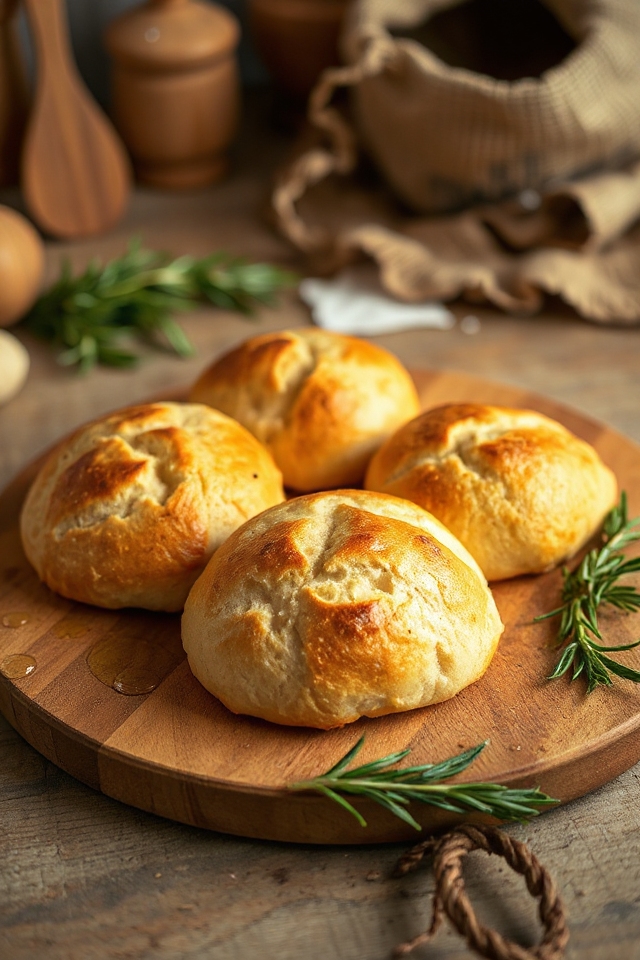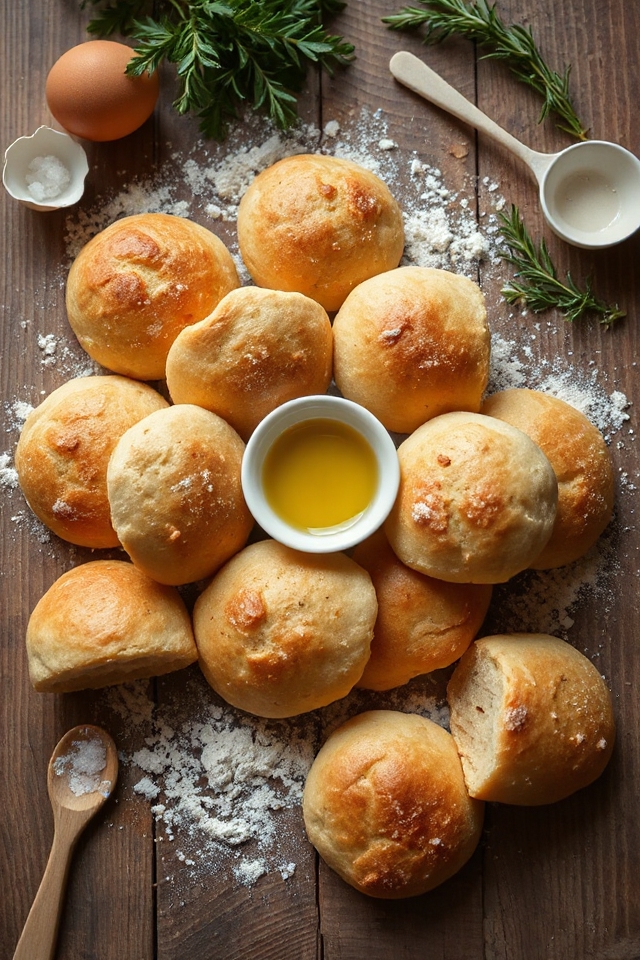Why You’ll Love This Unleavened Bread Recipe
You’ll love this Unleavened Bread recipe because it’s quick and easy to make, perfect for any occasion. I appreciate how it requires just a few simple ingredients, making it a great choice when I’m short on time. Plus, I can whip it up in under 30 minutes! The texture is delightful—crispy on the outside and soft on the inside. I’ve served it at gatherings, and everyone always asks for the recipe. Whether I’m pairing it with soups, salads, or enjoying it on its own, this bread never disappoints. Trust me; you’ll want to keep this recipe handy!
Ingredients of Unleavened Bread
When it comes to making Unleavened Bread, the ingredients are straightforward and easy to find. You probably already have most of them in your kitchen, which makes this recipe even more appealing.
The simplicity of the ingredients reflects the beauty of the bread itself—no fancy additives or complicated techniques required. Just good old-fashioned baking at its finest. So, let’s explore what you’ll need to whip up this delightful bread.
Ingredients for Unleavened Bread:
- 2 cups flour
- 1/3 cup water
- 3 tablespoons olive oil
- 1/8 teaspoon salt
- 1 egg
Now, let’s chat about these ingredients for a moment. You might be wondering about that humble flour. It’s the backbone of this recipe, giving the bread its structure.
You can use all-purpose flour, but if you want to get a little daring, consider experimenting with whole wheat flour for a nuttier flavor. The olive oil adds richness and a touch of Mediterranean flair, while the egg brings moisture and helps bind everything together.
And hey, that sprinkle of salt? It’s not just for flavor; it also enhances the other ingredients, making each bite more delicious. So, while these ingredients are simple, they come together to create something truly special.
Now, are you ready to roll up your sleeves and get started?
How to Make Unleavened Bread

Alright, let’s get down to the nitty-gritty of making that delightful Unleavened Bread. First things first, grab your mixing bowl and measure out 2 cups of flour. Now, if you’re like me and sometimes spill flour everywhere, just go ahead and embrace the mess—it’s part of the baking experience, right?
Next, add in 1/3 cup of water, along with 3 tablespoons of olive oil. That olive oil is going to give your bread a nice, rich flavor, so don’t skimp on it. Sprinkle in 1/8 teaspoon of salt, and crack one egg into the mix. This egg is your secret weapon; it helps everything stick together, like a good friend that keeps you grounded when life gets a bit chaotic.
Now comes the fun part—mixing! Get your hands in there or use a wooden spoon if you prefer to keep things tidy. You’ll want to combine everything until you have a nice, sticky dough. It should hold together well but might be a bit tacky.
Once you’ve got that dough ready, divide it into 10 equal balls. I usually just eyeball it, but if you want to be precise, a kitchen scale can help. Roll each ball out into 4-inch circles. Don’t worry if they’re not perfect; rustic is the name of the game here. Just roll them out like you’d pie dough.
Now, it’s time to bake these little beauties. Preheat your oven to 375 degrees Fahrenheit, or if you want to play it safe, go for 350 degrees Fahrenheit. You’ll bake them for about 10 minutes at the higher temp or 15 minutes at the lower temp.
Keep an eye on them, as most ovens tend to brown the bottoms and sides but leave the tops a bit pale—like that one cousin who always gets sunburned at family reunions. Once they’re done, let them cool for a minute, and there you have it—your own batch of Unleavened Bread, ready to be enjoyed.
Now, pat yourself on the back because you just made something delicious and simple!
Unleavened Bread Substitutions & Variations
While the classic Unleavened Bread recipe is delicious on its own, experimenting with substitutions and variations can elevate your baking game.
For a gluten-free option, I’ve had success using almond or coconut flour instead of regular flour. If you want to add flavor, try incorporating herbs like rosemary or thyme into the dough.
I’ve also swapped olive oil for melted coconut oil for a different taste. For a sweeter twist, a touch of honey or maple syrup works wonders.
You can even add seeds like sesame or poppy for an extra crunch! Don’t hesitate to get creative!
Additional Tips & Notes
Experimenting with substitutions and variations can be fun, but there are a few additional tips that can make your unleavened bread even better.
First, try using different types of flour like whole wheat or almond for unique flavors. If your dough is too sticky, sprinkle a bit of flour while rolling it out.
For added richness, consider brushing the baked bread with melted butter or olive oil right after it comes out of the oven.
Finally, keep an eye on the baking time; every oven is different, and slight adjustments can lead to perfect results. Enjoy your baking!
